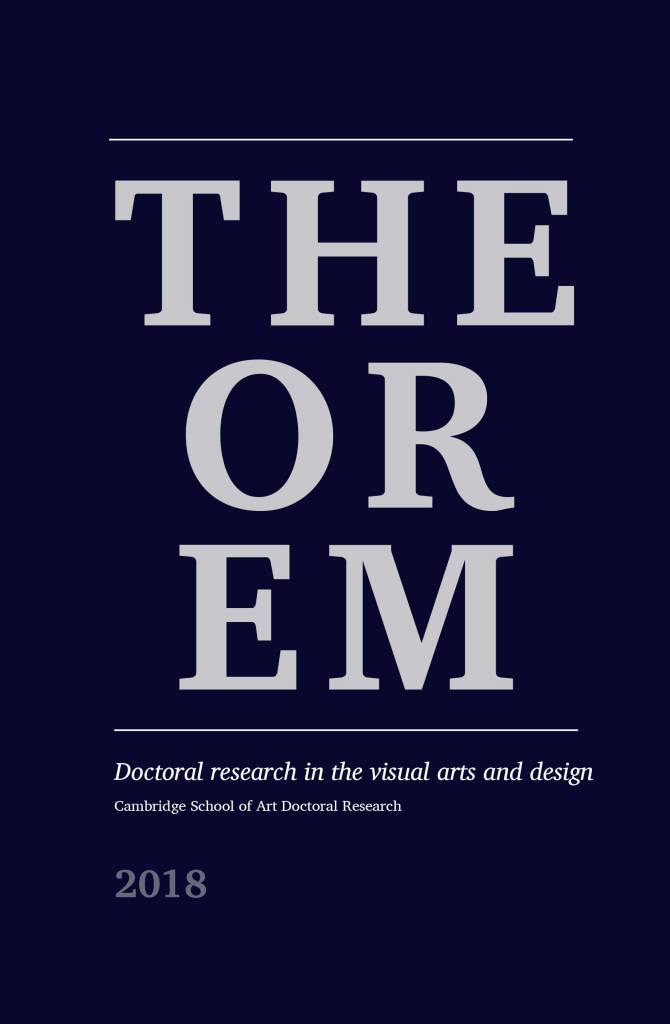Our recent release of Theorem 2018 is now available on Amazon.com.
Contributors include:
 Ryan Nolan (University of Plymouth), Beyond ‘Theory and ‘Practice’ in Arts Research
Ryan Nolan (University of Plymouth), Beyond ‘Theory and ‘Practice’ in Arts Research
Abstract: Arts research in the university is becoming increasingly instrumentalised, demonstrated by a rise in managerial language and frameworks that necessarily judge (artistic) research in terms of an end-product or quantifiable metrics. This phenomenon has otherwise been referred to as the ‘commodification of knowledge.’ In this paper, I propose that the distinction between ‘theory’ and ‘practice-based’ research in arts education—language central to the field—actually promotes a means-end function, increasing the risk of institutional weaponisation. Through a discussion of the forms-of-life that traditionally correspond to practice and theory in the philosophy of Hannah Arendt and Paolo Virno, I argue that arts research should instead be considered under the terms of political action: as a means without end (Agamben). The expectation of an end-product generated by the continued use of these terms negates the activity of research itself…. I propose this must be rectified.
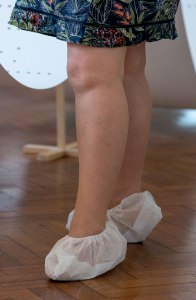 Rebecca Court (Birmingham City University), Front Stage: Back Stage
Rebecca Court (Birmingham City University), Front Stage: Back Stage
Abstract: Front Stage: Back Stage was constructed by utilising and subverting the accepted/expected layout and conditions of the exhibition space. On entering the gallery, a box of protective shoe covers was placed alongside a mat, which had to be traversed to cross the threshold. On the mat was printed an instruction, asking viewers to place the shoe covers over their footwear. Front Stage: Back Stage occupies an authorial uncertainty between artist, audience, exhibition space, institution and the political contexts that exists outside of these fields, but which infiltrate them. The objects in the empty gallery sit with potential and possibility; open to response and engagement or to a dismissive, perhaps rebellious, rendering of redundance. Yet the donning of the shoe-covers is a meaning-less action itself; there was not a floor-based work to be interacted with and the floor of the gallery is not a protected surface requiring shoe covers.The concept of the work is a framework for viewer collaboration, for the audience to become participant and respond to my instigations, as artist. The act of putting shoe covers on becomes the performance; the essential yet conversely inert action for the work.
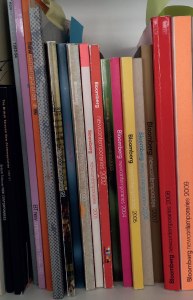 Emily Gray (Nottingham Trent University), Then is Now
Emily Gray (Nottingham Trent University), Then is Now
Abstract: My research examines the relationship between archives and contemporaneity through the case study of New Contemporaries organisational history. Established in 1949, New Contemporaries is recognised today as one of the most prominent platforms in the UK for early career artists within the visual arts sector. As an annual presentation of work by graduating students across national institutions, it marks the transition as artists emerge from education and move into the professional sphere. The exhibition offers an opportunity to assess not only the development of artistic practices in light of educational changes and market trends, but also its reflexive relationship to the culture of the moment. Approaching its 70th anniversary, the organisation has established a significant legacy. In response to the current imperative for institutions to collect, store and recover historical knowledge (Breakell, 2008), the investigation looks at the potential of New Contemporaries in developing its institutional archive.
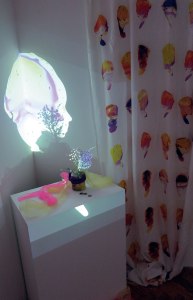 Clareese Hill (Goldsmiths University of London), Transmission: Unpacking Western Identity Theory
Clareese Hill (Goldsmiths University of London), Transmission: Unpacking Western Identity Theory
Abstract: A speculative poetic diagrammatic essay that seeks to conjure the Post-Identity space by asking a series of winding questions. The text is generated by the GUIDE of the Post-Identity space; they do not assume a positionality but present ideas.
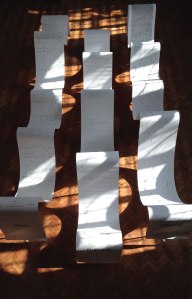 Zuyi Kang (Anglia Ruskin University), The Potential of Typographic Design Applications in Novel Writing
Zuyi Kang (Anglia Ruskin University), The Potential of Typographic Design Applications in Novel Writing
Abstract: Most novels or stories are purely written texts. The typographic design of each page is similar and conventional, with few illustrations or images. However, some novels are entirely different from this; their typographic layout changes with the storyline. In these books, the content has been specially arranged using changes in font size, spacing between words and rows, colour, alignment, case or additional symbols. Sometimes these changes make the sentences unreadable, but in this way, the typographic layout creates the content of the story, illustrating the characters’ emotions, and develops a narrative rhythm. Moreover, the role of these typographic elements can change according to the literary narrative structure.
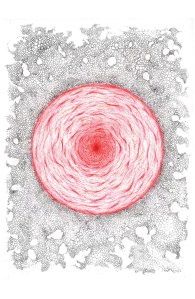 Dominique Baron-Bonarjee (Goldsmiths University of London), Automatism and Automation: Paradoxical Trajectories
Dominique Baron-Bonarjee (Goldsmiths University of London), Automatism and Automation: Paradoxical Trajectories
Abstract: A paradoxical tension exists between automatism and automation, in relation to consciousness, and the activity of bodies and machines. From spirituality to Surrealism, Artificial Intelligence (AI) to Silicon Valley and within my own art practice, I will expand upon some definitions in order to trace the correlations between these terms. The following inquiry traces the parallel trajectories of automatism and flow states, alongside the development of artificial brains for automation. The paradox will appear through this process, though like a Zen koan it “is contradictory; you cannot find the answer by logic. Head and body working together. That’s what you need to penetrate the koan.” (italics in original) (Austin, 1999:108).
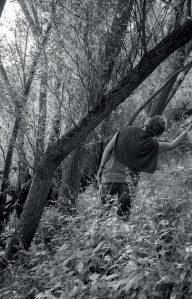 Kelcy Davenport (Anglia Ruskin University), Exploring ‘Bending’ as an Act of Resistance
Kelcy Davenport (Anglia Ruskin University), Exploring ‘Bending’ as an Act of Resistance
Abstract: On 21 July 2018, independent artists, Pernille Frandsen, Sally Stenton and I hosted a physical workshop exploring bending as a form of resistance. This workshop was inspired by our recent reading of “The Bent Man: Didactics of the Rebel”(Negri, 2005). With the participants of THEOREM2018, we began by undertaking a series of warm-up exercises for body and voice, taking inspiration from The Tao of the Voice (Chun-Tao Cheng, 1991) and then spent the morning reading and debating the play. After lunch we engaged in a physical workshop, exploring strategies for resistance through bending, deflection, energy transfer and embrace, devised and led by Sally Stenton. Here, we offer a short, written response each, by way of exploring our collaborative approach to research—an exercise in acting together while retaining a constellation of different concerns. Via this experiment, which resists a more ‘professional’ level of engagement, we find we have been able to research our subject more fully—academically, emotionally, physically.
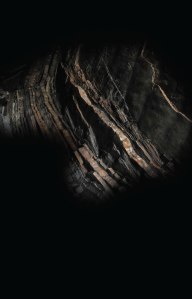 Kate Paxman (University of Plymouth), The Problem of Being the Problem: Exploring Thoughts on Expanded Notions of Field Working in the Making of Diapsid
Kate Paxman (University of Plymouth), The Problem of Being the Problem: Exploring Thoughts on Expanded Notions of Field Working in the Making of Diapsid
Abstract: How can arts practice respond in an era where we face ecological disaster driven by anthropogenic climate breakdown? To explore how creative practice can consider the effects inherent in our precarious present while acknowledging complicity in the contribution to its causes, this article will discuss the making of Diapsid (2018), a single channel film and audio installation and an outcome of my practice-based research. Diapsid (2018) is focused on our age of ecological loss and cascading extinctions. It is a speculative inquiry using intuition and imagination to engage with the unknowable and to notice, for as academic Mary Louise Pratt says, “noticing attunes us to worlds otherwise” (Pratt, 2017:G172).
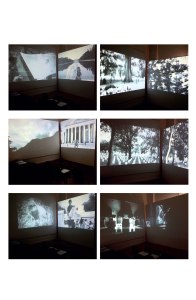 Livia Daza-Paris (University of Plymouth),Towards Attunement as Research Method in My Poetic Forensics Project
Livia Daza-Paris (University of Plymouth),Towards Attunement as Research Method in My Poetic Forensics Project
Abstract: This essay aims to articulate how ‘attunement’ as a method functions in my proposed notion of poetic forensics as investigative art practice. Described as “palpable and sensory, yet imaginary and uncontained” by K. Stewart (2011:445)—whose influence I will oftenreturn to in this paper—my explorations with attunement are developing as part of my PhD project Poetic Forensics: Investigative practice-led research on my politically disappeared father and notions of body, peoples and land (Daza-Paris, in draft). I experiment with the idea that there can be a referential dynamic, through attunement between body, alluding to the corporeal body, a disappeared body or even a body of land and history; peoples referring to the peoples of the land; and land broadly entailing nature and, in my work the nonhuman. Attunement is situated within the emergent field of nonrepresentational theory (Thrift, 2007), and with attunement, things matter, as Stewart (2011:445) writes “not because of how they are represented but because they have qualities, rhythms, forces, relations, and movements.”
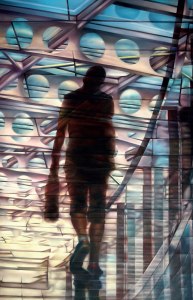 Dashamir Vaqari (University of Derby), Art Practice as a Methodology for Research in Transnationalism and Home
Dashamir Vaqari (University of Derby), Art Practice as a Methodology for Research in Transnationalism and Home
Abstract: Through my work I aim to address two primary research questions. Firstly, what constitutes home in post-communist Albanian Diasporas in Germany and the UK? This considers issues such as the location of home, loss of home, and the development of new or multiple homes.The focus of this essay is on my second primary research question:How can these ideas be questioned, challenged, interpreted and visually represented in a body of creative practice? Transnationalism and the concept of home have been discussed in theoretical literature;(Gupta and Ferguson, 1992; Portes, Guarnizo, and Landolt, 1999; Waldinger and Fitzgerald, 2004). However, this discourse often seems to lack the emotion and introspection that is so central to this topic; therefore my project uses art practice as the medium through which to explore these aspects of transnationalism and home.
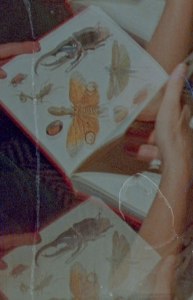 Luisa Greenfield (University of Plymouth), Bilderbuch
Luisa Greenfield (University of Plymouth), Bilderbuch
Abstract: In early 2016 I became a member of the Labor Berlin Film collective, where a varying international group dedicated to DIY analogue film practice can independently realize film projects from start to finish by sharing equipment and knowledge. My work with the medium of analogue film started in a 16mm colour reversal workshop offered at the lab. Bilderbuch (2017) was the result of that workshop and it stands as a material record of the 16mm colour negative process. Every camera glitch, jam, and stutter is recorded and became an accepted part of the internal editing of the piece. Hand-processing the film created inevitable streaks and spots on the final negative, leaving traces that attest my hands, by necessity, touched every part of the film.
 Richard Kearns (University of York), Encountering the Creative Moment in the Age of the Selfie
Richard Kearns (University of York), Encountering the Creative Moment in the Age of the Selfie
Abstract: Exhibiting Selfie-Booth at Theorem 2018 gave me the opportunity to produce an artwork for a show outside the installation environments that have become my norm over the last four years. Constructed out of a jewellery box found in a charity shop, Selfie-Boothe invites audiences to open its lid and press a button to take a photograph of themselves with a camera mounted inside. The image is then automatically stored within the box. Although there is nowhere for the selfie to be viewed, a sense of it can be gained from the mirror mounted behind the camera on the inside of the lid. There is also a clockwork winder accessible, which starts a musical mechanism and causes the ballerina to rotate. I made the piece to expand my doctoral research and explore the actions a post-selfie audience has with a participatory proposition in an exhibition space containing multiple works by different artists. I draw my research evidence from the interactive artworks I create, although my thesis is an interdisciplinary textual study that borrows from a number of diverse specialisms. My inquiry explores correlations between these, and scenarios I instigate that engage audiences in participatory processes.
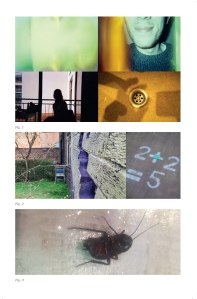 Kallina Brailsford (Nottingham Trent University), Visual Literacy in a Culture of Immediate Photography
Kallina Brailsford (Nottingham Trent University), Visual Literacy in a Culture of Immediate Photography
Abstract: Visual literacy in a culture of immediate photography: Evaluating the impact of participatory visual methods on the reengagement of NEETs (young people between the age of 16-24 not in education, employment or training).
 Karen Abadie (University of Plymouth), Subjectivity and Affect: Uncomfortable Bedfellows
Karen Abadie (University of Plymouth), Subjectivity and Affect: Uncomfortable Bedfellows
Abstract: Subjectivity is at the heart of my research. However, throughout the life of my PhD research I have repeatedly questioned the personal nature of my research methodology. This is because it often requires me to reveal some of my deepest secrets and vulnerabilities, which regularly lead to awkward responses in my audiences. Consequently, I have become intrigued by this drive to research issues that reveal my own vulnerabilities. However, I suggest subjective research methodologies have significant value in the practice-as-research field.
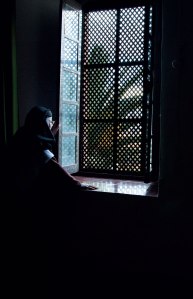 Keynote Essay by Dr Nina Danino (Reader of Fine Art at Goldsmiths University of London), Filming Women’s Work as Prayer in the Monastery in Jennifer and Sorelle Povere
Keynote Essay by Dr Nina Danino (Reader of Fine Art at Goldsmiths University of London), Filming Women’s Work as Prayer in the Monastery in Jennifer and Sorelle Povere
Abstract: In comparing two films, Jennifer (2015) and Sorelle Povere di Santa Chiara (2016), I will explore the relationship between theory and practice in each. Both films foreground filming itself as a way of collaborating with two women’s religious communities. Jennifer was filmed within the Discalced Carmelite monastery in Ronda, Spain and Sorelle Povere di Santa Chiara was filmed with the enclosed community of Clarissians in San Marino who follow a different charism and were founded in a different history. The films are portraits, Jennifer places emphasis on an individual and Sorelle Povere di Santa Chiarais a 16mm film about the community. I will also touch on how the religious space is constructed in the two films. My recent research is a PhD by Film publication entitled, Experimental Film: Catholic and Feminist Readings of my Films 2010-2017 (Danino, 2017), which examines the intersection of religion, feminist perspectives and experimental film, and is relevant in these two works. This essay will show the relationship of thinking theoretically and in practice, and how I use the subjects’ own terms of reference to produce and read the work from within these terms, i.e. through a Catholic perspective and discourse, as well as referring to perspectives from both outside and within film theory. Thank you to Anglia Ruskin University and Jane Boyer for inviting me to Theorem 2018, and for her support and for the transcription of the Q&A session from the symposium. I found the questions very stimulating as they expanded the discussion around the work. I have included excerpts of the Q&A at the end of this essay.
You can also find our previous publications, Theorem 2017 and Theorem 2016 on Amazon too.

